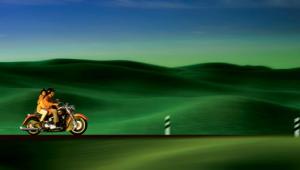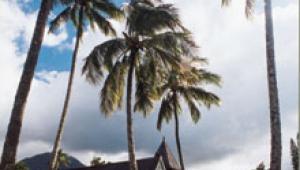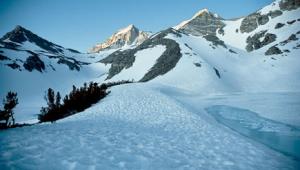I think that being a photographer is one of the most beautiful and exciting jobs that exist. Besides the fact that you have to work, as an advertising photographer, you see many beautiful places, unknown to some people. I like photography a lot too, until now I gathered thousands of phone photos from places I traveled, enough for many exhibitions.
Wilhelm Scholz: Shooting Travel Images for Advertising Page 2
Kohler created a campaign based on various photographers' styles and visions entitled, "As I See It." Their agency came up with the basic concept, and allowed photographers interpret it their own way. In Scholz' case, the concept was to depict a surfer coming out of a faucet and splashing against a mountainside. Scholz chose Arches National Park in Utah for the background and the positioning of the faucet, as he liked the surreal landscapes and clean lines of this environment. He also wanted to find a surfer "who could produce a huge splash on a wave." After researching various sources, he chose a surfer who lives on Hawaii's North Shore. Unfortunately at the time, he was "catching some waves" in Japan, but after some negotiating, he flew back to Hawaii for the shoot. The splash on the wave was then combined with various elements of water from a garden hose that was photographed in the back of a surf shop.
 |
|
|
Scholz often shoots here in the U.S., Canada or South America. He did a job
for AEG, a European appliance company. For this ad, he photographed a Grizzly
bear (handled by an animal wrangler) in Montreal, Canada, next to a river. Then
he photographed a small bear next to an AEG washing machine. The photos were
composited to create a unique statement.
He also enjoys a certain amount of freedom. "Most of the time when commercial
work comes in," he explains, "they rely on you to pick the location."
Star Alliance (who represent a number of airlines) wanted him to choose a spot
that wasn't typical of just one country. Scholz wound up shooting this
ad campaign in New Zealand, as the variety in this country's landscape
can appear to be different locales. "You can't pinpoint where this
shot was done," he says.
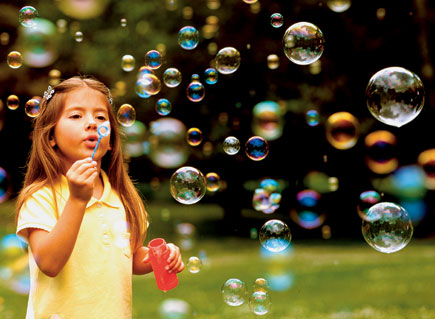 |
|
|
Scholz is also working very hard on his personal project, photographing indigenous groups. "The one constant thing is that I always use a gauzy background," says Scholz. The foreground includes a natural setting that is typical of where the person is from. He's hoping to publish a photography book on this project.
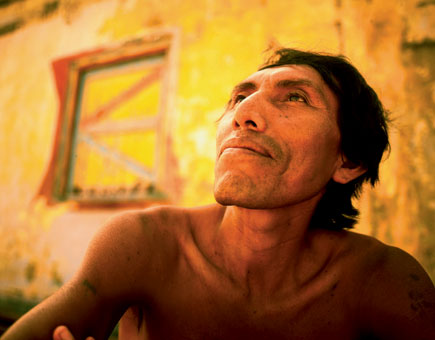 |
|
|
Photo Equipment
Scholz shoots primarily with a large-format 4x5 Cambo Wide 650 or 900, or an
Arca-Swiss Discover with Horseman 6x9 and 6x12 backs. He says, "I prefers
Schneider lenses for my large-format cameras because of their sharpness and
beautiful contrast." His lenses range from 55mm to 210mm for his large
and medium-format cameras. When working in medium format, he uses a Fuji 6x17,
and "for fast-moving subjects," he uses a Pentax 67II.
 |
|
|
His film preferences are Fujichrome RVP 50 or RDP 100. "I've recently
been doing tests with RVP 100, which I love because of the extra `stop'
I can get. Since I need to use a center filter on my large-format wide-angle
lenses, which causes me to lose one stop of exposure, the additional film speed
puts me back to `normal.'"
Scholz has experimented a little with digital cameras, but currently, he prefers
to shoot film. Sometimes on his assignments, he says, he finds himself in some
challenging weather conditions. He doesn't feel comfortable in relying
purely on electronics during those conditions. "I look forward to the
day when this problem won't be an issue."
 |
|
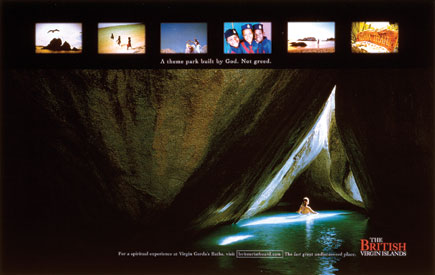 |
|
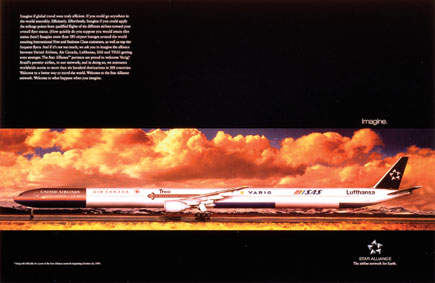 |
|
|
Travel Photos That Sell: Seven Tips
1. Research your location. "First, I read--either
on the Internet or in books--until I turn blue with possible ideas."
Scholz recently learned about the Ashaninka, a large tribe in Peru who were
affected by terrorism. Once he decides he wants to photograph people like these,
he contacts someone locally before going to their country. This way, he can
find out about photographic restrictions, if any.
2. Be sure your visit will be acceptable to people you want to photograph
in foreign countries. Scholz advises that you find a middleman or someone
who can make your visit "not so impactful." Learn the people's
language and a little about their culture, if possible. Scholz is tri-lingual,
so it's often easy for him to find assistance in other countries. He believes
in establishing rapport and not photographing someone if they're uncomfortable
with the idea. "You must be welcome, and be sure the people are not threatened
by your presence."
3. Pack wisely! On his first trip to India, Scholz recalls,
"I discovered that I didn't use half the stuff I brought with me,
but still had to carry the weight around." He now packs much lighter,
and everything he takes must have "production value," or he leaves
it at home. He adds, "I also treat my personal travel photography this
way."
4. Be prepared to spend a lot of money initially. If you're
traveling to shoot pictures, the ideal scenario is to have a publication or
company fund your trip. However, if you're trying to break into professional
photography, or shooting for your portfolio or for stock, chances are that you're
on your own financially. Be sure you have enough money to invest in a photo
excursion, and find out about the tax laws where you live. You may be able to
write off a percentage of your expenditures for the first year or two.
5. If you're shooting for stock, and want to photograph people
in a location that has no access to "talent," you may have to hire
a model from another city and transport him/her to your location. This
can get very expensive, so it's a good idea to have a definite shoot list
to maximize your time and money. Scholz adds, "I always advise my assistants
to shoot stock--it may be their retirement money."
6. Get releases! Scholz recommends that all your releases are
"industry standard," for adults, minors, property, and even livestock.
"I cannot stress enough the importance of proper documentation when shooting
for stock," he says. Also, he says, if you're submitting work to
a stock agency for the first time, make sure to ask which buildings are off-limits
for stock usage. "You'll be surprised by the answers--so don't
go and shoot the `wrong' places."
7. If you promise to send pictures to models, do it. "Not
only will you be remembered in a negative way if you break your promise, but
you'll influence others not to trust photographers," Scholz notes.
Wilhelm Scholz clearly loves his job and remains enthusiastic about the new
experiences that travel brings. "You get to meet incredible people out
there with unique stories," he says.
- Log in or register to post comments













